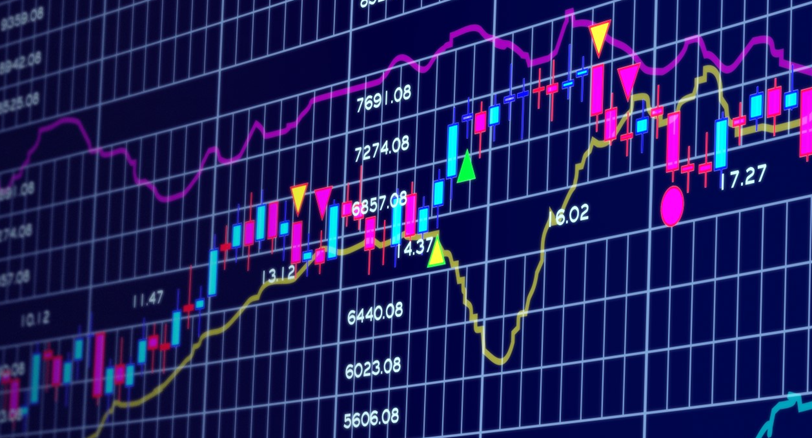Daily Archives: May 21, 2024

In the fast-paced world of forex trading, staying informed about global economic events is crucial. metatrader 4 for windows one of the most popular trading platforms, offers a powerful tool to help traders stay updated: the Economic Calendar. This feature is indispensable for both novice and experienced traders who seek to make informed decisions based on macroeconomic data. Let’s delve into what the Economic Calendar is and how you can leverage it to enhance your trading strategy.
What is the Economic Calendar?
The Economic Calendar in MT4 is a comprehensive schedule of upcoming economic events and data releases from around the world. These events include key indicators such as interest rate decisions, employment reports, GDP figures, and inflation data. These releases can significantly impact currency markets, creating opportunities for traders to capitalize on market movements.
Key Features of MT4’s Economic Calendar
Real-Time Updates
One of the standout features of MT4’s Economic Calendar is its real-time updates. Traders receive immediate notifications about economic events as they happen, ensuring they are always in the loop. This real-time access allows traders to react swiftly to market changes and adjust their positions accordingly.
Impact Indicators
Not all economic events have the same influence on the market. MT4’s Economic Calendar categorizes events by their potential impact—high, medium, or low. This classification helps traders prioritize their focus on events likely to cause significant market volatility. For instance, a central bank’s interest rate decision would be marked as a high-impact event, whereas a minor economic report might be flagged as low impact.
Customization
MT4’s Economic Calendar allows traders to customize their view according to their specific trading needs. Users can filter events by country, importance, and time frame, enabling them to focus on the most relevant data. This customization ensures that the calendar remains a practical tool tailored to individual trading strategies.
How to Use the Economic Calendar
Planning Trades
By anticipating market-moving events, traders can plan their trades more effectively. For example, if a high-impact event like the U.S. Non-Farm Payroll report is scheduled, traders might choose to avoid entering new positions due to the expected volatility or prepare to capitalize on the movement post-release.
Risk Management
Understanding upcoming economic events also aids in risk management. Traders can adjust their stop-loss and take-profit levels to account for potential market volatility. Additionally, being aware of high-impact events can help in deciding when to exit positions to avoid unnecessary risks.
Strategy Development
Incorporating the Economic Calendar into your trading strategy can lead to more informed decision-making. For instance, some traders might use a news trading strategy, focusing on the immediate market reaction to economic releases. Others might prefer a more long-term approach, analyzing how macroeconomic trends influence currency pairs over time.
Conclusion
MetaTrader 4’s Economic Calendar is an essential tool for any forex trader aiming to stay ahead in the market. By providing real-time updates, impact indicators, and customization options, it empowers traders to make informed and strategic decisions. Incorporating this tool into your trading routine can enhance your ability to navigate the forex market’s complexities, ultimately leading to more successful trading outcomes.
- Service
- 0

Contracts for Difference, commonly referred to as CFDs, are versatile financial instruments that enable traders to speculate on the price movements of various assets, without owning the underlying asset. Here’s all you need to know about what is CFDs and how they work.
What are CFDs?
CFDs are derivative products that allow traders to profit from price fluctuations in assets such as stocks, commodities, currencies, and indices, without owning the underlying asset itself. Instead, traders enter into a contract with a broker to exchange the difference in the value of the asset between the time the contract is opened and when it is closed.
How do CFDs work?
When trading CFDs, traders can go long (buy) if they anticipate the asset’s price will rise or go short (sell) if they believe it will fall. Unlike traditional investing, CFD trading offers the flexibility to profit from both rising and falling markets. Additionally, CFDs often provide access to leverage, allowing traders to amplify their market exposure with a smaller initial investment.
Key Features of CFD Trading
One of the primary attractions of CFD trading is its flexibility. Traders can choose from a wide range of assets and markets, including stocks, commodities, currencies, and indices, providing ample opportunities for diversification. Moreover, CFDs offer the advantage of flexible leverage, allowing traders to adjust their exposure to the market according to their risk appetite and trading strategy.
Risks Associated with CFD Trading
While CFDs offer the potential for high returns due to leverage, it’s essential to be aware of the associated risks. Leveraged trading can amplify both profits and losses, and traders may lose more than their initial investment if the market moves against them. Therefore, it’s crucial to have a clear risk management strategy in place and only trade with funds that you can afford to lose.
Conclusion
CFDs are powerful financial instruments that offer traders the opportunity to profit from price movements in various asset classes. With their flexibility, accessibility, and potential for high returns, CFDs have become increasingly popular among traders worldwide. However, it’s essential to approach CFD trading with caution and ensure you understand the risks involved before getting started.
- Service
- 0